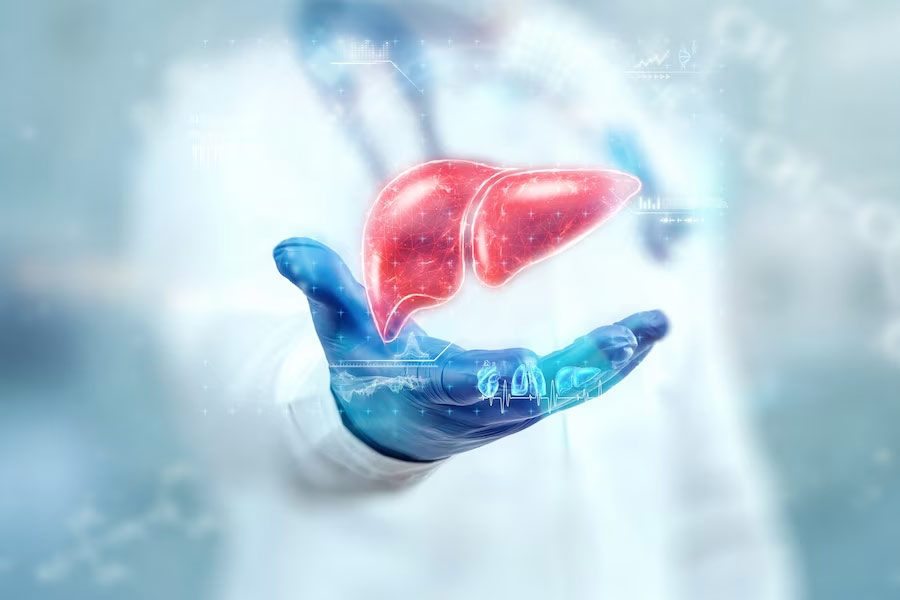
Fatty liver disease, or hepatic steatosis, is an epidemic on the silent march through thousands of lives globally. It is caused by the deposition of excess fat in liver cells and can be as benign as it is severe, emerging as Non-Alcoholic Steatohepatitis (NASH) that develops into inflammation, liver damage, and even cirrhosis. Although the dire statistics cast a shadow of concern over the situation, there is a ray of hope that seldom finds a mention, and that is the positive influence of daily exercise.
Table of Content:-
For years, dietary changes have been at the forefront of fatty liver management. But can simply lacing up your trainers and hitting the pavement genuinely reverse this condition? We asked the same to our expert, Dr Shrey Kumar Srivastav, Senior Consultant and General Physician, Sharda Hospital - Noida, and he positively affirmed, "Yes." Here is everything you need to know and how exercising regularly can help reverse fatty liver disease.
How Exercise Tackles Liver Fat
“The liver performs a vital function in metabolism, and when it is fat-loaded, it loses its function. Regular exercise targets some of the most significant mechanisms in the formation and evolution of fatty liver,” Dr Srivastav explained. Here’s how:
1. Insulin Sensitivity Boost
Insulin resistance is one of the main causes of fatty liver, in which the cells in your body fail to respond well to insulin, causing high blood sugar and excess fat buildup in the liver. Exercise, especially aerobic exercise and resistance training, significantly enhances insulin sensitivity. Your body becomes better at using glucose for energy, and the load on the liver to metabolise excess sugars into fat is minimised.

Also Read: Is Your Liver in Trouble at Night? Doctor Explains Red Flags of Fatty Liver You Shouldn’t Ignore
2. Burning Fat Stash
When you exercise, your body draws on its stores of fat for fuel. This means the fat stored in your liver too. Regular exercise encourages the oxidation of fatty acids, which directly decreases the amount of fat deposited in hepatic cells.
3. Lessening Visceral Fat
The dangerous fat that develops around your organs, or visceral fat, has a close connection with fatty liver disease. Exercise is very effective in diminishing this kind of fat, which subsequently reduces the load on the liver and enhances its function overall.
4. Enhancing Liver Enzyme Levels
All research repeatedly indicates that those who regularly exercise see a notable decrease in abnormal liver enzymes (such as ALT and AST), which are markers of inflammation and damage to the liver. This implies a direct healing and protective effect of exercise on liver cells.
5. Fighting Inflammation
Low-grade, chronic inflammation is a characteristic of advanced fatty liver disease. Exercise has potent anti-inflammatory effects, neutralizing the inflammatory cascade that can result in scarring of the liver as well as more damaging effects.
6. Weight Control
Although not the sole reason, weight loss is a common positive outcome of frequent physical exercise and plays a direct role in reversing fatty liver. Even slight weight reduction can produce remarkable reductions in liver fat.

Also Read: Hidden Signs That Your Liver Is Storing Fat! Expert Shares Insights
What Type of Exercise Works Best?
The best news is, you don't have to be an Olympic athlete to benefit from it. A blend of aerobic and strength training seems to be the most effective approach.
1. Aerobic Exercise
Brisk walking, jogging, cycling, swimming, or dancing for a minimum of 150 minutes per week (i.e., 30 minutes, five times per week) can lower liver fat dramatically and enhance insulin sensitivity. The intensity must be moderate, i.e., you can continue to talk but are breathless.
2. Resistance Training
Two to three times a week, lifting weights, working with resistance bands, or bodyweight exercises such as squats, lunges, and push-ups builds muscle mass. Greater muscle mass enhances metabolic rate and glucose uptake, also leading to improved insulin sensitivity and fat oxidation.
Bottomline
The one thing to note is that exercise is not only a blanket recommendation for optimal health; it's an effective, drug-free therapy capable of reversing fatty liver disease. By enhancing insulin sensitivity, metabolising fat, cutting inflammation, and generally keeping the metabolic machinery humming along, movement represents a remarkable chance to mend and shield this important organ. So, take the first step, or the hundredth, and give your liver permission to lose the fat and flourish.
Also watch this video
How we keep this article up to date:
We work with experts and keep a close eye on the latest in health and wellness. Whenever there is a new research or helpful information, we update our articles with accurate and useful advice.
Current Version
